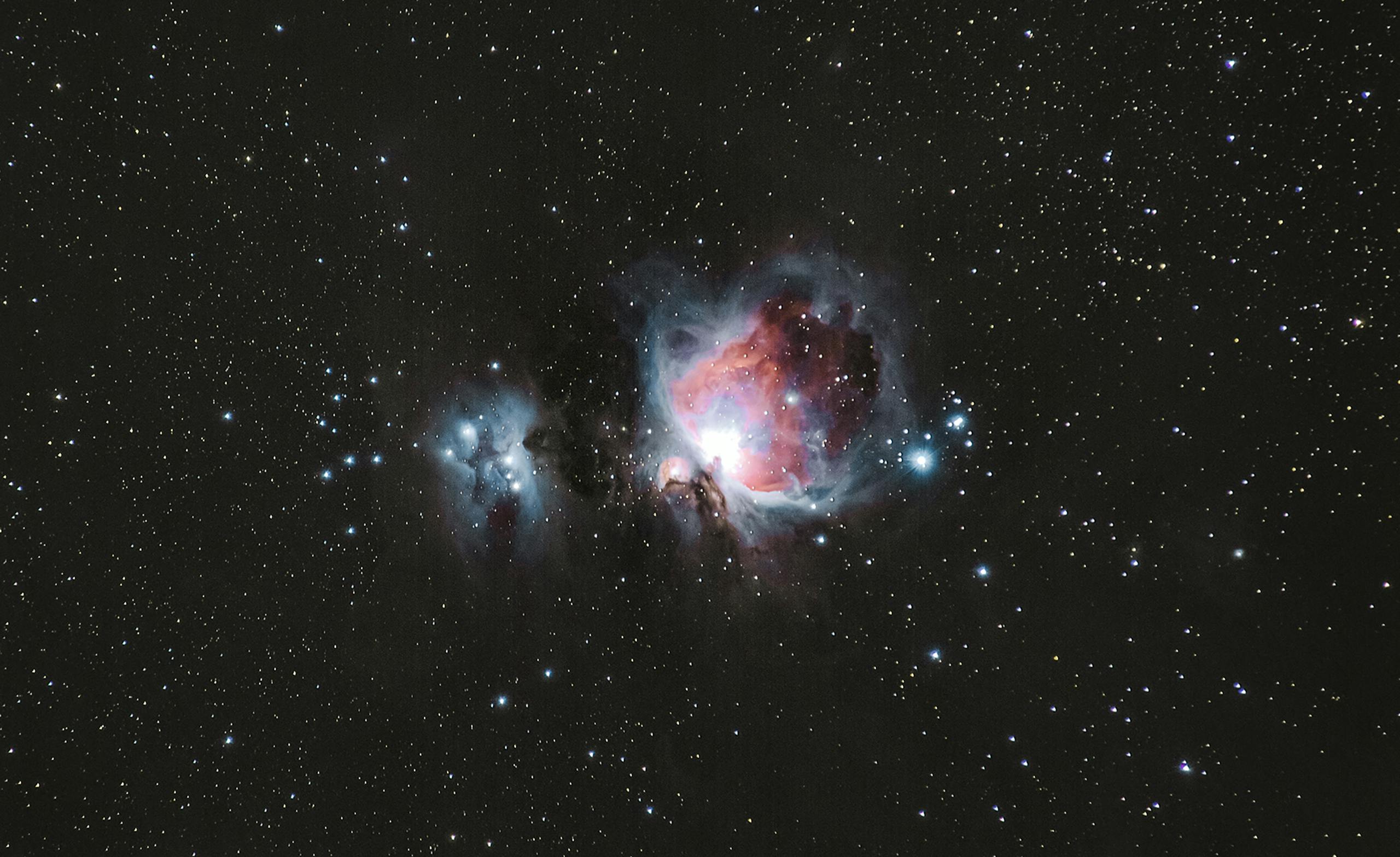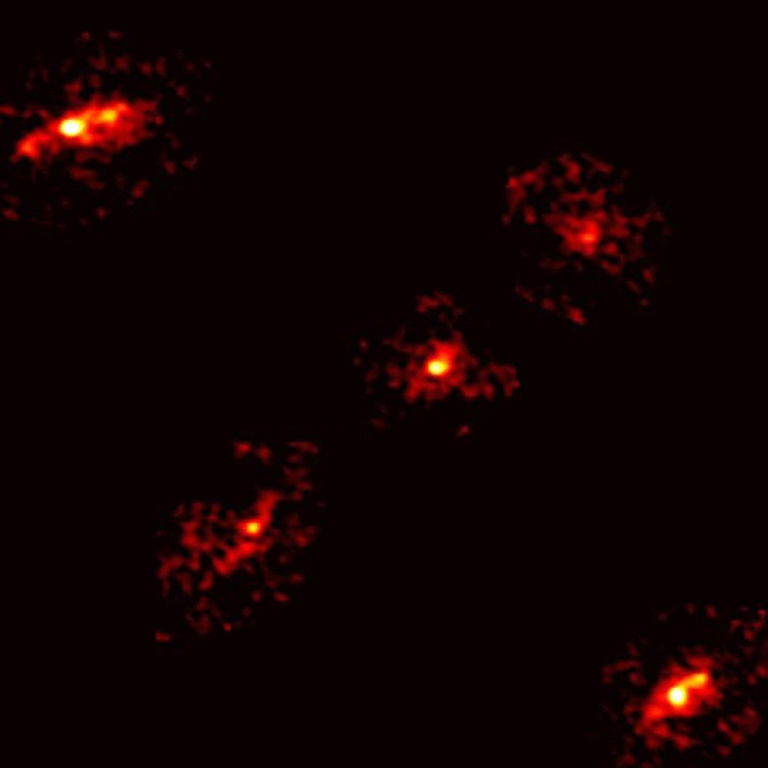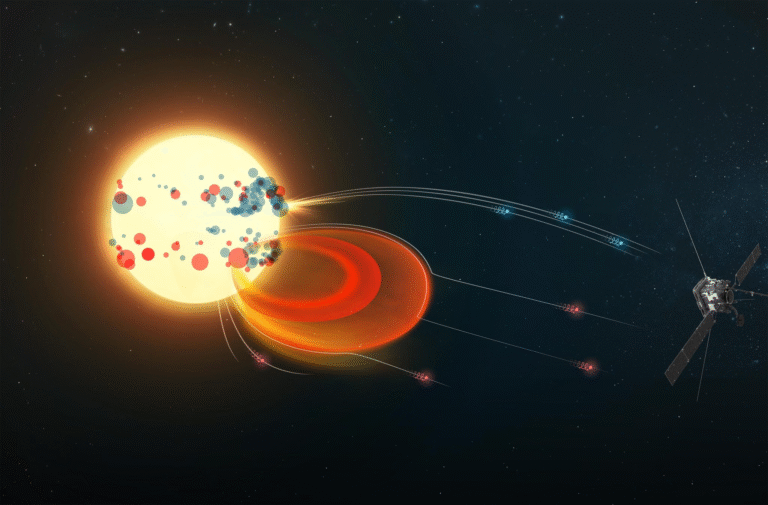Dark Matter Might Literally Change How We See the Universe

Dark matter has always been the invisible player in the cosmic game. It makes up about 85% of all matter in the universe, yet we can’t see it, touch it, or detect it directly. It doesn’t emit or absorb light, and until now, it was assumed that dark matter had no effect on light except through gravity. But a new study suggests that dark matter might do more than just bend light—it could actually change its color ever so slightly.
A group of physicists from the University of York (UK) have published a paper in Physics Letters B proposing that the interaction between light and dark matter could subtly tint the universe’s light—either making it appear slightly more red or blue, depending on how dark matter behaves.
What the Researchers Did
The researchers, led by A. Acar and colleagues, explored what happens when photons (particles of light) pass through regions of space filled with dark matter. Instead of trying to detect high-energy decay products from dark matter, as many previous studies have done, this one focused on how light might scatter when it interacts with dark matter particles.
The team calculated the scattering cross-sections—basically, the likelihood of photons bouncing off dark matter particles—for two different scenarios:
- Dark matter that interacts only through gravity.
- Dark matter that weakly interacts with other forces, such as the electromagnetic force (like theoretical WIMPs—Weakly Interacting Massive Particles).
These calculations show how the direction and energy of light might shift slightly after passing through dark matter. Surprisingly, the pattern of this scattering could cause measurable differences in how light from distant galaxies appears to us.
The Blue and Red Tint Scenarios
Here’s what the study found:
- Scenario 1: Gravity-Only Interaction
If dark matter interacts only through gravity, photons that pass through dark matter regions tend to scatter forward, meaning they get a very tiny boost in energy. That boost would slightly shift their color toward the blue end of the spectrum. It’s not enough to make galaxies suddenly glow blue, but it’s a real, quantifiable effect in theory. - Scenario 2: Weakly Interacting Dark Matter (WIMPs)
If dark matter particles can interact through weak forces, then photons are more likely to backscatter—bouncing backward and losing a tiny bit of energy. This energy loss would make light appear slightly more red.
The difference between these two effects—blue tint for gravitational dark matter and red tint for weakly interacting dark matter—could give scientists a whole new way to identify what kind of dark matter fills our universe.
How Big Is the Effect?
Let’s manage expectations: this isn’t going to change the color of the night sky. The effect is incredibly tiny. The researchers estimate that the fractional change in wavelength (Δλ/λ) would be around:
- 10⁻⁹ for gravitational-only dark matter (a billionth of the light’s wavelength)
- 10⁻⁸ to 10⁻⁷ for weakly interacting dark matter, depending on how massive the particles are
That’s extremely subtle—far smaller than effects caused by dust, gas scattering, or even instrument calibration errors. But with modern telescopes becoming more sensitive and capable of analyzing millions of light sources, the authors believe that these minute shifts could eventually be detectable, especially when data from thousands of galaxies are combined.
Polarization Effects: A Bonus Clue
Interestingly, the researchers also found that in the purely gravitational scenario, the scattering could lead to polarization effects—light waves becoming slightly aligned in one direction. Detecting these polarization changes might be easier than measuring such a tiny color shift. This adds a whole new dimension to how we might search for the fingerprints of dark matter.
Why This Study Is Important
This idea is groundbreaking because it opens a new observational window into dark matter. Traditionally, scientists have looked for dark matter through:
- Direct detection (looking for dark matter hitting detectors on Earth)
- Indirect detection (searching for radiation produced when dark matter particles annihilate or decay)
- Gravitational lensing (measuring how dark matter bends light)
This new approach—measuring how dark matter slightly tints or polarizes light—adds another layer of observation that doesn’t rely on catastrophic events like particle collisions or decays. It’s a gentler, cumulative signature that could appear in the light from galaxies, quasars, or cosmic background radiation that has traveled through dark matter-rich regions.
If detected, the direction of the tint could even tell us which theory is correct:
- A blue tint would support models where dark matter interacts only through gravity.
- A red tint would support models involving WIMPs or other weakly interacting particles.
Challenges and Limitations
Of course, there are big challenges ahead. The effect is so tiny that even the best current instruments might not be sensitive enough to detect it. The universe already contains many sources of color change, such as interstellar dust, cosmic redshift due to expansion, and gas absorption. Distinguishing the faint influence of dark matter from all these other effects is a massive challenge.
Additionally, the theory depends heavily on assumptions like:
- The mass of dark matter particles (around a TeV, or a trillion electron-volts)
- The density of dark matter along the line of sight
- The presence of intermediate particles that allow weak interactions between light and dark matter
If any of these assumptions are wrong, the predicted tinting might not occur or could be even smaller.
How Could We Detect It?
The researchers suggest several observational strategies:
- Compare light from galaxies behind regions of high dark matter density (like galaxy clusters or the Milky Way’s center) to light from areas with little dark matter.
- Use next-generation telescopes capable of ultra-precise spectral and polarization measurements.
- Combine data from millions of light sources to statistically reveal the tiny cumulative shifts caused by dark matter.
Upcoming observatories like the Vera Rubin Observatory, the European Extremely Large Telescope, and NASA’s future gamma-ray missions could potentially provide the kind of precision needed for this.
If no red or blue tint is found even at extreme sensitivity levels, it would still be an important result—it could rule out certain WIMP models or put tighter limits on how dark matter interacts with light.
What Exactly Is Dark Matter, Anyway?
Since this research hinges on understanding dark matter, it’s worth recalling what scientists know—and don’t know—about it.
- Dark matter has mass. It exerts gravity and helps galaxies stay together.
- It’s invisible. It doesn’t emit, reflect, or absorb light.
- It’s not made of regular particles. Neutrinos, protons, and electrons can’t account for it.
- We’ve never detected it directly. Every piece of evidence comes from its gravitational effects—on galaxies, cosmic background radiation, and large-scale structure.
The leading candidates for dark matter are:
- WIMPs (Weakly Interacting Massive Particles) — heavy, slow-moving particles that interact via the weak nuclear force.
- Axions — hypothetical ultra-light particles that could explain the smooth distribution of dark matter.
- Sterile neutrinos or other exotic particles predicted by extensions of the Standard Model.
Each model predicts different behaviors, and now, perhaps, different ways light could be affected.
Why This Matters for Cosmology
If future observations confirm that dark matter subtly changes the color or polarization of light, it would be one of the biggest breakthroughs in modern cosmology. It wouldn’t just tell us that dark matter exists—we already know that—it would tell us what kind of dark matter fills our universe.
It would also provide a completely new method of studying dark matter that doesn’t rely on massive particle colliders or underground detectors. It could finally give astronomers a way to see the invisible.
Even if the effect is never detected, the fact that researchers can model such tiny interactions shows how far theoretical cosmology has come. We’re now reaching a point where even the smallest possible interactions between light and dark matter are being seriously considered.
Research Reference:
A. Acar et al., Dark matter: Red or Blue?, Physics Letters B (2025). https://doi.org/10.1016/j.physletb.2025.139920





